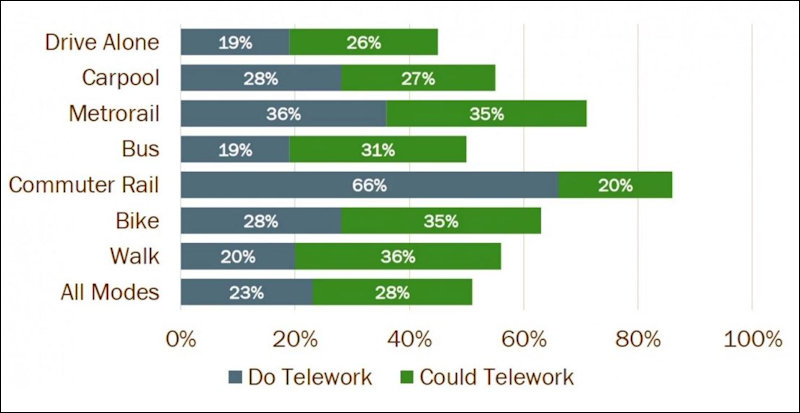by James A. Bacon
The trend toward less driving in the Washington metropolitan area has conformed to the devout wishes of greenies and planners alike over the past decade: Average daily vehicle miles driven per capita has declined steadily since 2005 from 25.7 miles to 22.6 miles. (Driving in 2015 showed a 0.1 mile up-tick, not surprising given the plunge in gasoline prices.)
But not because people were shifting to mass transit. Weekday ridership on the Washington Metropolitan Area Transit Authority (WMATA) also declined: from 748,000 per day in 2009 to 701,000 in 2015. More people are biking, but the numbers are so small that biking as a transportation mode can’t move the needle. Something else is going on.
The Washington Post‘s Dr. Gridlock, Robert Thomson, thinks that telecommuting might explain the difference. He cites a 2013 State of the Commute study that says more than half of commuters either can or could telework. As it turns out, the percentage of telecommuters is highest among those who also rely on rail transit, as shown in the chart above.
I find that counter intuitive. All other things being equal, I would expect commuters with the longest, most grueling ride to the office would have the greatest incentive to work at home. For whatever reason, that doesn’t seem to be the case. Why not? Perhaps commuters consider mass transit even more unpleasant or unreliable than spending time behind the wheel — not implausible, given the widely publicized safety, maintenance and reliability issues plaguing WMATA.
Whatever the reason, the phenomenon is worth exploring. We’re spending billions of dollars patching up Northern Virginia’s transportation infrastructure. There’s got to be a better way.



